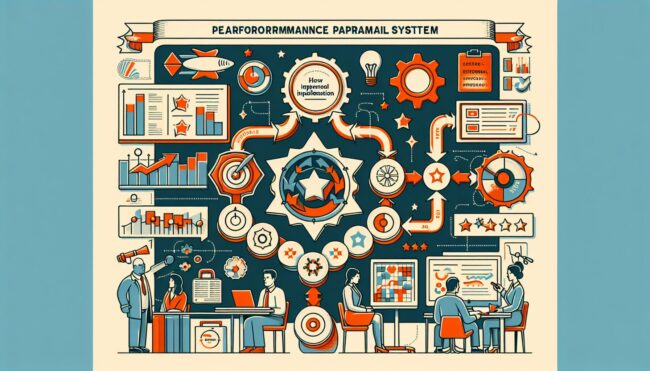
摘要:绩效考核系统的设计与实现关键在于确定考核目标、构建评价指标、设计评价过程、制定考核结果的应用。本文将Focusing on the design and implementation of the Performance Appraisal System, the key elements include identifying assessment objectives, constructing evaluation indicators, designing the evaluation process, and formulating the application of assessment results. Among them, the construction of the evaluation indicator system is the foundation, which involves the differentiation of positions and roles, the identification of performance drivers, and the integration of both qualitative and quantitative metrics. This article will delve into each of these aspects more comprehensively.
一、DETERMINING ASSESSMENT OBJECTIVES
In the realm of Performance Appraisal System design, defining clear and concise objectives holds paramount importance. These objectives should align with both the strategic goals of the organization and the development needs of the employees. Criteria such as improving productivity, fostering professional growth, and enhancing team dynamics are examples of typical objectives the system aims to achieve.
By setting these targets, the system ensures that every employee understands what is expected of them and how they can align their efforts with the company’s strategy. This strategic alignment acts as a guiding star for the system’s overall structure and ensures that the evaluation’s outputs are meaningful and geared towards organizational success.
二、CONSTRUCTING EVALUATION INDICATORS
The foundation of an effective Performance Appraisal System lies in a robust and balanced set of evaluation indicators. The indicators must encompass a wide variety of performance dimensions, including, but not limited to, individual skills, team contributions, leadership abilities, and innovation capacities. The balanced scorecard approach is a common methodology used in this regard, integrating financial and non-financial metrics to provide a comprehensive evaluation.
By utilizing such a diverse set of indicators, the system is capable of providing a multifaceted view of an employee’s performance. It acknowledges that contribution cannot solely be measured in quantitative terms, recognizes the value of soft skills, and appreciates innovative efforts, thereby contributing to a well-rounded appraisal.
三、DESIGNING THE EVALUATION PROCESS
A structured and transparent evaluation process is central to the system’s design. This process should include periodic assessments, real-time feedback mechanisms, and the use of technology to streamline the workflow. The evaluation process typically begins with goal setting, followed by continuous monitoring, feedback sessions, and ending with a performance review that is objective and constructive.
By following a systematic approach, the system fosters an environment where employees feel valued and engaged. The use of technology, such as employee performance management software, can facilitate real-time tracking and deliver insights that are actionable and timely, making the evaluation process both efficient and effective.
四、FORMULATING THE APPLICATION OF ASSESSMENT RESULTS
The ultimate aim of implementing a Performance Appraisal System is to harness the assessment results in a way that promotes individual growth and organizational efficiency. Utilizing the results requires an understanding of reward systems, career progression pathways, and the identification of training and development needs.
By applying the results effectively, the system becomes more than a mere assessment tool; it transforms into an instrument for organizational and employee development. Rewards and recognitions aligned with assessment outcomes not only motivate employees but also inculcate a performance-driven culture.
The design and implementation of the Performance Appraisal System are not static, but require continual refinement and adaptation to the dynamic nature of the workforce and organizational goals. This system serves as a catalyst for sustainable performance improvement and cultivates a performance-oriented climate within the organization. Through meticulous planning and execution of these core facets, an organization can achieve heightened performance levels and foster a culture that both recognizes and rewards excellence.
相关问答FAQs:
1. 什么是绩效考核系统?
绩效考核系统是一种通过评估员工在工作中表现的工具,旨在衡量员工的工作表现和成就,并为员工提供明确的目标和反馈,从而帮助组织提高运营绩效和实现战略目标。
2. 绩效考核系统的设计原则有哪些?
绩效考核系统的设计原则包括明确的目标设定、绩效标准的公平性与可衡量性、多维度评估、员工参与、以及实时反馈和改进。设计时要考虑组织的战略目标和价值观,并结合员工的工作内容和特点,以及考核周期等因素。
3. 如何实现绩效考核系统的有效运行?
为实现绩效考核系统的有效运行,组织需要注重对员工的培训与指导,建立有效的绩效管理流程和沟通机制,定期审查和调整绩效考核指标,以及给予员工适当的激励和奖励,从而确保系统在组织中得到全面有效的实施。
文章标题:绩效考核系统的设计与实现,发布者:worktile,转载请注明出处:https://worktile.com/kb/p/76319

 微信扫一扫
微信扫一扫  支付宝扫一扫
支付宝扫一扫 




